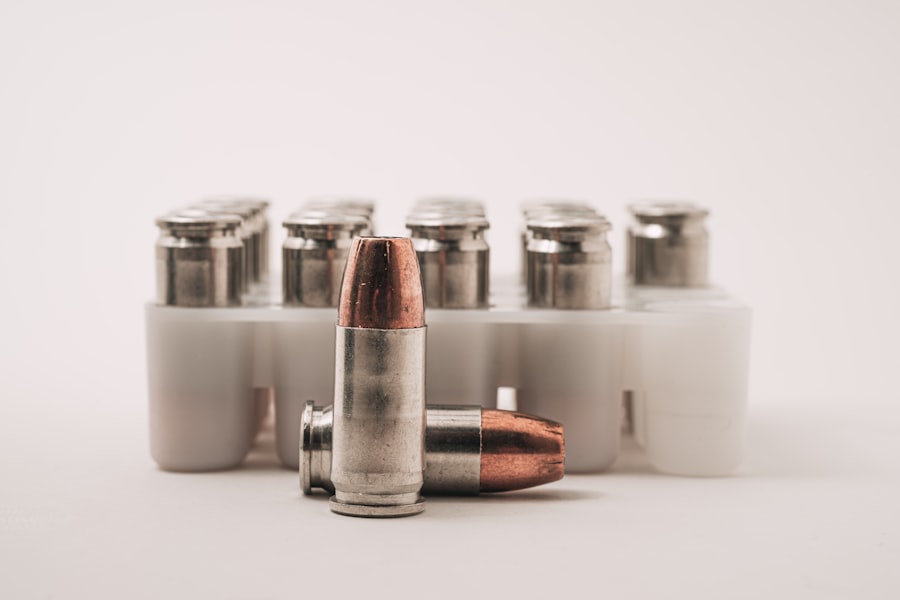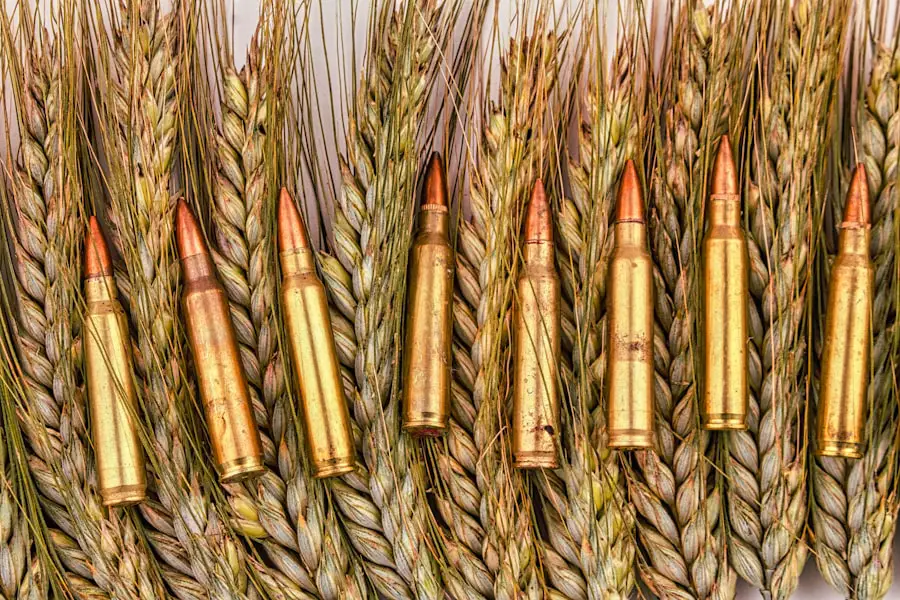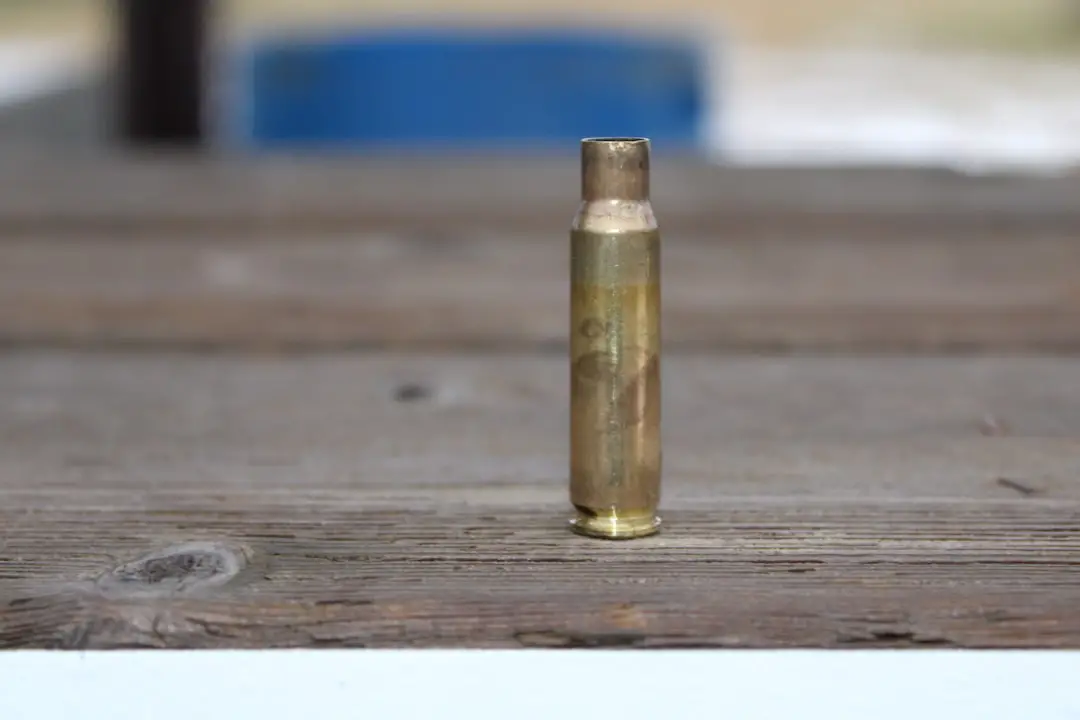The .40 caliber bullet, often referred to as the .40 S&W (Smith & Wesson), emerged in the early 1990s as a response to the need for a round that could bridge the gap between the 9mm and .45 ACP cartridges. Developed by Smith & Wesson in collaboration with Winchester, this cartridge was designed to offer law enforcement and civilian shooters a balance of manageable recoil, effective stopping power, and a higher magazine capacity than larger calibers. The .40 S&W quickly gained popularity among police departments and personal defense enthusiasts, becoming a staple in the firearms community.
The design of the .40 caliber bullet features a diameter of .40 inches (10.16 mm) and typically weighs between 155 to 180 grains. This range allows for versatility in performance, catering to various shooting applications from self-defense to competitive shooting. The .40 caliber is known for its ability to deliver significant energy upon impact, making it an effective choice for personal protection.
Its popularity has led to a wide array of ammunition options, including full metal jacket (FMJ), hollow point (HP), and specialty rounds designed for specific purposes.
Key Takeaways
- 40 caliber bullets are commonly used in handguns and have a diameter of .40 inches
- Factors affecting bullet distance include bullet weight, velocity, and environmental conditions
- The maximum range of a 40 caliber bullet is influenced by its ballistic characteristics and the angle of fire
- Bullet weight and velocity have a significant impact on the distance a bullet can travel
- Environmental conditions such as wind, temperature, and humidity can affect the trajectory of a 40 caliber bullet
Factors Affecting Bullet Distance
Several factors influence the distance a .40 caliber bullet can travel, with the most significant being the bullet’s initial velocity, weight, and the angle at which it is fired. The initial velocity is determined by the amount of gunpowder in the cartridge and the design of the bullet itself. A higher velocity generally results in a flatter trajectory and longer distance traveled.
For instance, a .40 caliber bullet fired from a standard handgun can achieve velocities ranging from 950 to 1,200 feet per second, depending on the load and barrel length. Another critical factor is the weight of the bullet. Heavier bullets tend to retain energy better over distance but may have a slower initial velocity compared to lighter bullets.
This trade-off can affect how far the bullet travels before losing its effectiveness. Additionally, the angle of elevation during firing plays a crucial role; bullets fired at an optimal angle (typically around 30 to 45 degrees) can achieve greater distances due to the physics of projectile motion. Understanding these factors is essential for shooters who wish to maximize their effective range.
Maximum Range of a 40 Caliber Bullet

The maximum range of a .40 caliber bullet can vary significantly based on several variables, including the specific load used, barrel length, and environmental conditions. Generally speaking, the maximum range of a .40 caliber bullet is estimated to be around 1,500 yards under ideal conditions. However, this figure is theoretical and does not account for practical shooting scenarios where accuracy and effectiveness are paramount.
In real-world applications, the effective range of a .40 caliber bullet is typically much shorter. For self-defense situations, distances of 7 to 25 yards are more common, as most encounters occur within this range. Law enforcement agencies often train officers to engage targets at similar distances, emphasizing quick target acquisition and accuracy over long-range shooting.
While the .40 caliber can travel great distances, its effectiveness diminishes significantly beyond 100 yards due to factors such as bullet drop and loss of kinetic energy.
Effects of Bullet Weight and Velocity on Distance
| Bullet Weight (grains) | Velocity (fps) | Distance Traveled (yards) |
|---|---|---|
| 100 | 3000 | 500 |
| 150 | 2500 | 700 |
| 200 | 2000 | 800 |
The interplay between bullet weight and velocity is crucial in determining how far a .40 caliber bullet can travel effectively. Lighter bullets, such as those weighing around 155 grains, tend to achieve higher velocities compared to their heavier counterparts. This increased speed can result in flatter trajectories and longer distances traveled before significant drop occurs.
For example, a lighter .
Conversely, heavier bullets, typically weighing around 180 grains, may have lower initial velocities but can offer better terminal performance upon impact. These bullets are often favored for self-defense scenarios due to their ability to create larger wound channels and transfer more energy to the target.
However, their increased weight can lead to more pronounced drop over distance, limiting their effective range compared to lighter bullets. Shooters must consider these factors when selecting ammunition for specific applications, balancing the need for distance with terminal ballistics.
Environmental Conditions and Bullet Travel
Environmental conditions play a significant role in how far a .40 caliber bullet can travel and how accurately it can be shot. Factors such as wind speed and direction, humidity, temperature, and altitude can all affect bullet performance. For instance, wind can cause lateral drift, pushing the bullet off course as it travels toward its target.
A strong crosswind can significantly alter the trajectory of a bullet fired at long distances, necessitating adjustments in aim. Temperature and humidity also influence bullet performance by affecting air density. In colder temperatures or high humidity conditions, air becomes denser, which can slow down the bullet’s velocity and increase drag.
Conversely, warmer temperatures typically result in less dense air, allowing bullets to travel farther with less resistance. Altitude is another critical factor; at higher elevations where air pressure is lower, bullets may experience less drag and maintain higher velocities over longer distances. Shooters must be aware of these environmental variables when planning shots in varying conditions.
Accuracy and Precision of 40 Caliber Bullets

Accuracy and precision are paramount when discussing any firearm cartridge, including the .40 caliber bullet. Accuracy refers to how close a shot lands to the intended target center, while precision indicates the consistency of shot placement over multiple attempts. The design of the .40 caliber bullet contributes significantly to both accuracy and precision; its relatively high ballistic coefficient allows it to maintain stability during flight.
Factors such as barrel length and rifling twist rate also play crucial roles in determining how accurately a .40 caliber bullet can be fired. A longer barrel generally provides better accuracy due to increased velocity and reduced muzzle rise during firing. Additionally, the twist rate of the rifling affects how well the bullet stabilizes in flight; an optimal twist rate ensures that the bullet remains stable and on course toward its target.
Shooters often experiment with different ammunition types and firearm configurations to find the combination that yields the best accuracy for their specific needs.
Safety Concerns and Legal Regulations
When handling .40 caliber ammunition or any firearm cartridge, safety should always be a top priority. Proper training in firearm handling is essential for preventing accidents and ensuring responsible use. Shooters must be aware of safe storage practices for ammunition and firearms alike, keeping them secured away from unauthorized users or children.
Additionally, understanding how to safely operate firearms—such as keeping the muzzle pointed in a safe direction and treating every gun as if it were loaded—is critical for preventing mishaps. Legal regulations surrounding .40 caliber ammunition vary by jurisdiction but generally include restrictions on magazine capacity, types of ammunition allowed for civilian use, and requirements for firearm ownership permits or licenses. In many areas, hollow point ammunition is subject to specific regulations due to its design intended for self-defense purposes.
It is crucial for gun owners to familiarize themselves with local laws regarding firearm ownership and ammunition use to ensure compliance and avoid legal repercussions.
Conclusion and Recommendations
In summary, understanding the characteristics of .40 caliber bullets is essential for anyone interested in firearms—whether for self-defense, law enforcement applications, or recreational shooting.
Shooters should carefully select ammunition based on their intended use while remaining mindful of safety practices and legal regulations governing firearm ownership.
For those looking to maximize their effectiveness with .40 caliber ammunition, investing time in training is invaluable. Regular practice at various distances will help shooters become familiar with their firearm’s capabilities while honing their skills in different environmental conditions. Additionally, staying informed about advancements in ammunition technology can provide insights into new options that may enhance performance further.
Ultimately, responsible ownership combined with thorough knowledge will lead to safer and more effective use of .40 caliber firearms.
If you’re looking for information on how far a 40 caliber bullet can travel, you may also be interested in reading about the best ski travel bag on TakeTravelInfo. This article provides valuable insights into choosing the right bag to protect your ski equipment while traveling.
FAQs
What is the typical range of a 40 caliber bullet?
The typical range of a 40 caliber bullet is around 1000 to 1500 yards when fired from a handgun, and up to 4000 yards when fired from a rifle.
What factors can affect the distance a 40 caliber bullet can travel?
The distance a 40 caliber bullet can travel can be affected by factors such as the type of firearm used, the specific load of the bullet, the angle at which it is fired, and environmental conditions such as wind and air density.
Is there a maximum range for a 40 caliber bullet?
The maximum range for a 40 caliber bullet is determined by its ballistic characteristics and the limitations of the firearm used to fire it. In general, the maximum effective range for a 40 caliber bullet is around 1500 yards.
What are the safety considerations when discussing the range of a 40 caliber bullet?
When discussing the range of a 40 caliber bullet, it is important to emphasize the importance of safe and responsible firearm handling. Always follow proper firearm safety protocols and be aware of your surroundings when handling firearms.
